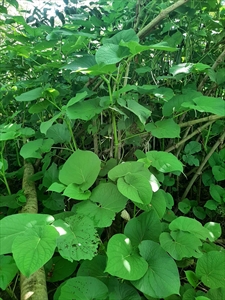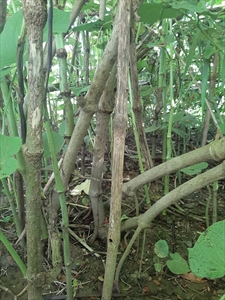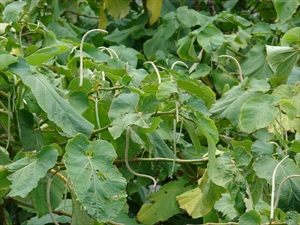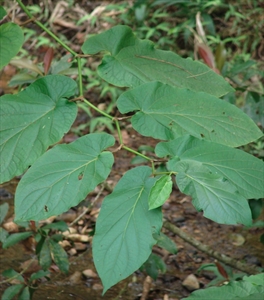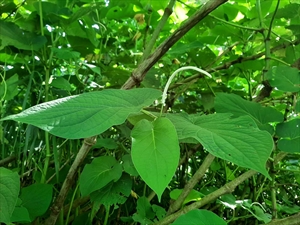- Worldwide distribution (except Africa). In Federated States of Micronesia, Fiji, French Polynesia, Samoa, Tonga, Vanuatu.
- Major invasive shrub, suckering rapidly, forming dense thickets in native forests, along waterways, plantations, pastures, food gardens. Difficult to control: all parts regrow rapidly. Competes with kava and presence lowers commodity value. Host of CMV, causing kava dieback.
- Small shrub, 1-2m, sometimes tree-like to 6m. Leaves, oval, 30cm long, with one lobe larger. Leaf stalks surrounding stem and winged. Flowers, small, pale green in long arching spikes, up to 25cn, opposite leaves.
- Spread: birds, bats, rodents, water; trade in kava.
- Biosecurity: chance of introduction high in kava consignments.
- Biocontrol: none.
- Cultural control: hand-weed removing all roots; or slash and collect all cuttings and burn. Clean machinery/vehicles.
- Chemical control: 2,4-D or imazapyr, applied to basal bark or cut stems.

